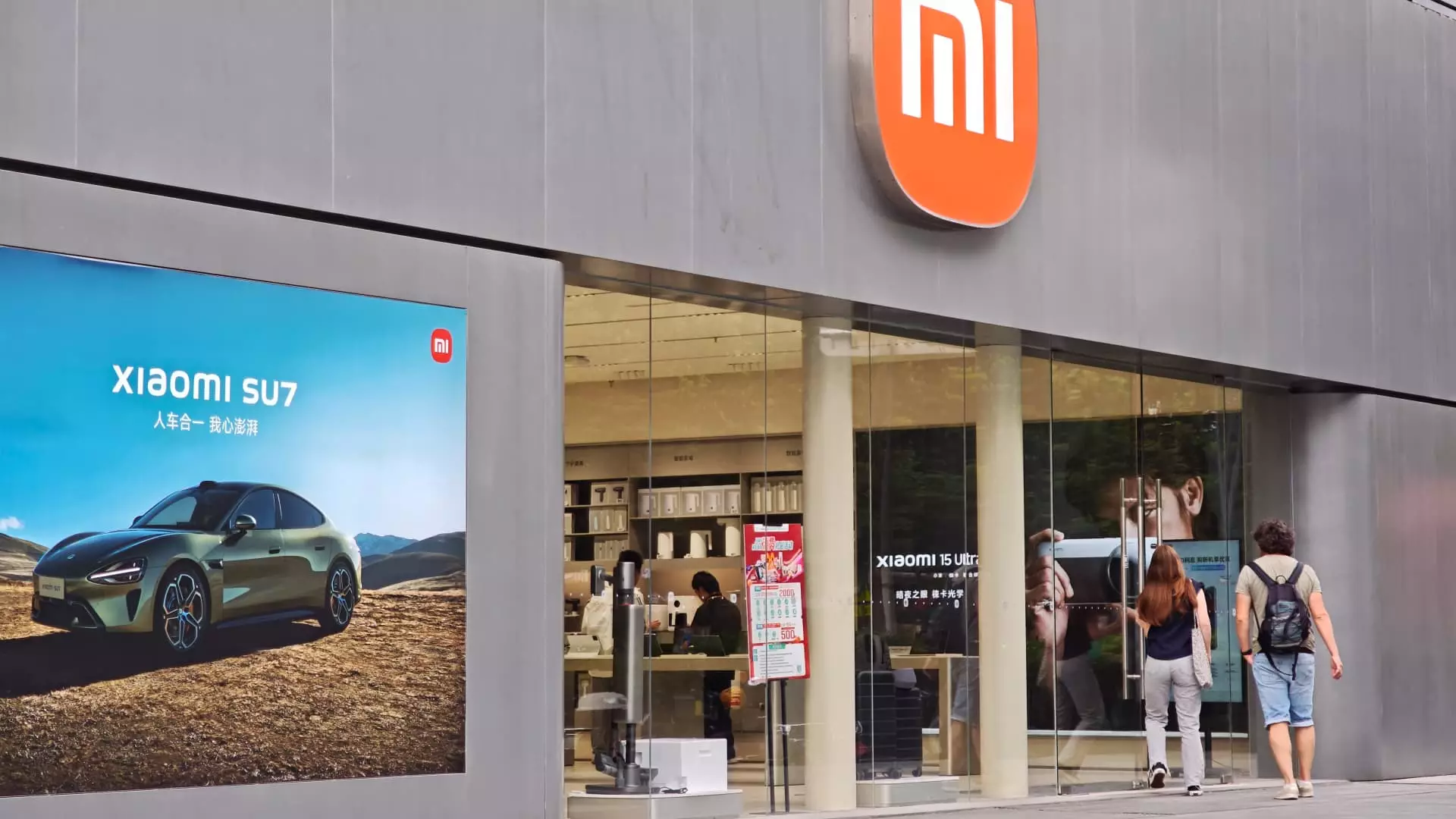Xiaomi’s recent financial performance has undeniably captured the market’s attention, showcasing a record net profit for the second consecutive quarter. This achievement hasn’t occurred in a vacuum; it reflects a business strategy that emphasizes innovation and adaptability in a rapidly changing global market. With reported adjusted net income exceeding expectations at 10.68 billion yuan ($1.48 billion) — a substantial increase from previously anticipated figures — Xiaomi illustrates that it is not merely surviving but thriving in the competitive landscape of technology giants.
While it is true that Xiaomi’s financial results still pale in comparison to the towering presence of Apple, it’s crucial to examine the bigger picture. Not only does Xiaomi command a robust smartphone market share in China, but it has also ventured into electric vehicles (EVs), diversifying its portfolio. This diversification is particularly significant given Apple’s recent withdrawal from automotive initiatives, highlighting an opportunity for Xiaomi to potentially dominate both the smartphone and EV markets in China.
Market Dynamics and Strategic Moves
In the world of technology, adaptability is key. Xiaomi appears to have nailed this principle with its recent foray into the realm of Artificial Intelligence of Things (AIoT). The recent surge in demand for smart appliances that can be seamlessly integrated into a hyper-connected home environment plays to Xiaomi’s strengths. As noted by Jefferies analysts, the competent performance of Xiaomi’s appliances powered by AI technology — controllable via mobile apps — represents a large future revenue stream. With nearly 40% of its income originating from smartphones and around 22% from appliances, the company’s ability to cater to a changing consumer landscape is commendable.
Furthermore, Xiaomi is gearing up to release its highly anticipated Xring O1 chip, which promises to elevate its smartphone game, particularly against Apple’s formidable A18 Pro chip. This innovation is not just a technical upgrade; it demonstrates Xiaomi’s commitment to producing high-quality and competitively priced devices. With plans to sell the new 15S Pro smartphone for considerably less than the iPhone 16 Pro, Xiaomi is effectively positioning itself as an attractive alternative, especially in the price-sensitive Chinese market.
The Electric Vehicle Gambit
In an increasingly electrified landscape, Xiaomi’s transitions into the EV market—particularly with its forthcoming YU7 SUV—could prove revolutionary. Slated for launch in July, the YU7 not only promises a longer driving range than Tesla’s Model Y but also positions Xiaomi as a frontrunner in an automotive battleground often dominated by established brands. Morgan Stanley has already highlighted the potential positive impact this launch could have on Xiaomi’s average sale prices (ASPs) and profit margins, reflecting a deeper understanding of consumer needs and demands.
The anticipation surrounding the YU7 is not unfounded. If executed correctly, it has the potential to trigger significant sales increases, further bolstering Xiaomi’s revenue growth. In a market where consumer behavior is clearly shifting towards sustainable transportation options, this strategic move places Xiaomi in a favorable position ahead of competitors who may not be as agile or forward-thinking.
Resilience Amidst Competition
While Xiaomi celebrates its successes, it must remain vigilant in facing challenges. Analysts have pointed out discrepancies in ecosystem-related revenue growth, highlighting the comparatively slower performance of its services against the backdrop of hardware sales. This distinction serves as a reminder that while hardware may currently drive growth, equity hinges on the establishment of a comprehensive services ecosystem—something Apple has adeptly mastered.
Moreover, the political atmosphere surrounding trade regulations, particularly concerning U.S.-China relations, could pose challenges for any Chinese technology company. Apple’s recent struggles associated with its overseas supply chain amplify the importance of maintaining a diverse operational approach, as Xiaomi seems to be doing. A resilient strategy that combines innovation in hardware, an expansive service model, and agile responsiveness to market demands will be key in sustaining growth.
As Xiaomi continues to flourish, it expands its footprint while establishing solid foundations in emerging sectors like electric vehicles and AI-integrated technologies. The financial acumen displayed in navigating challenges reflects a commitment to growth and resilience in the face of fierce competition and uncertainty. The critical takeaway? Xiaomi may still be in the shadow of industry giants, but its trajectory screams promise and adaptability — qualities that can lead to future triumphs in this ever-evolving sector.

